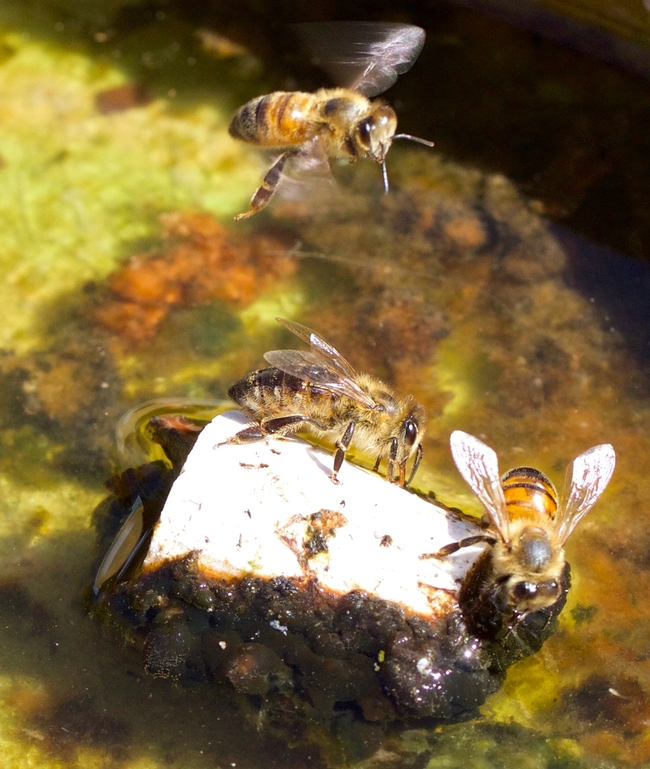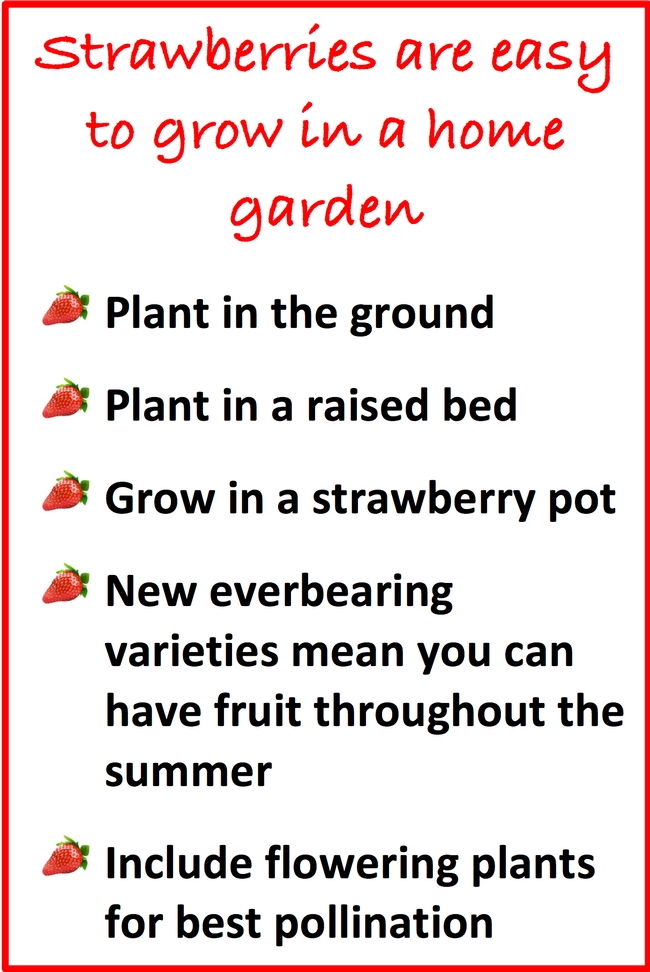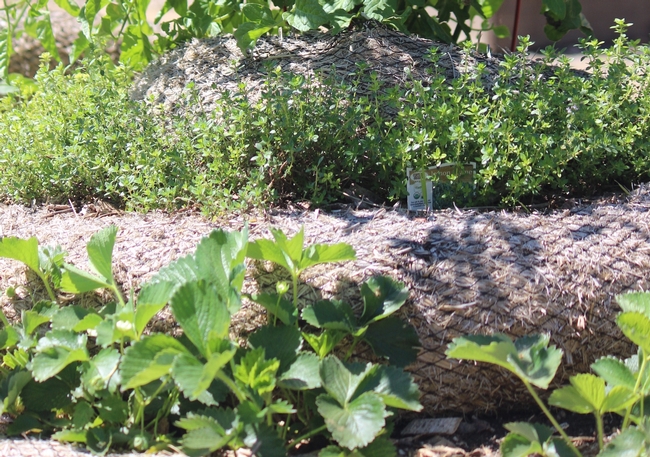- Author: Christine Casey
Spring is here, and planting is underway in bee gardens throughout California. And planting, especially if you're creating a new garden, means you are thinking about design. In this series of posts I will cover various aspects of garden design -- such as color, texture, shape, and size -- from the perspective of what bees need. Based on research, this information should provide a solid foundation for a successful bee garden.
This post will focus on color. An understanding of color theory is helpful in creating an aesthetically pleasing garden for us, but color is also relevant for bees. All color wheel screen shots shown here are from the Adobe web page.
1. Complementary colors. Colors opposite each other on the color wheel are complementary; this is one of the easiest ways to select colors. Using opposite colors together makes each color appear more vibrant.
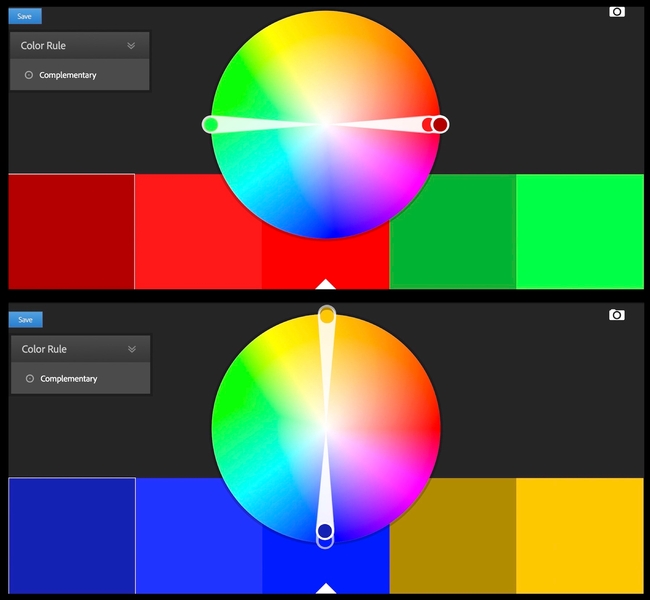
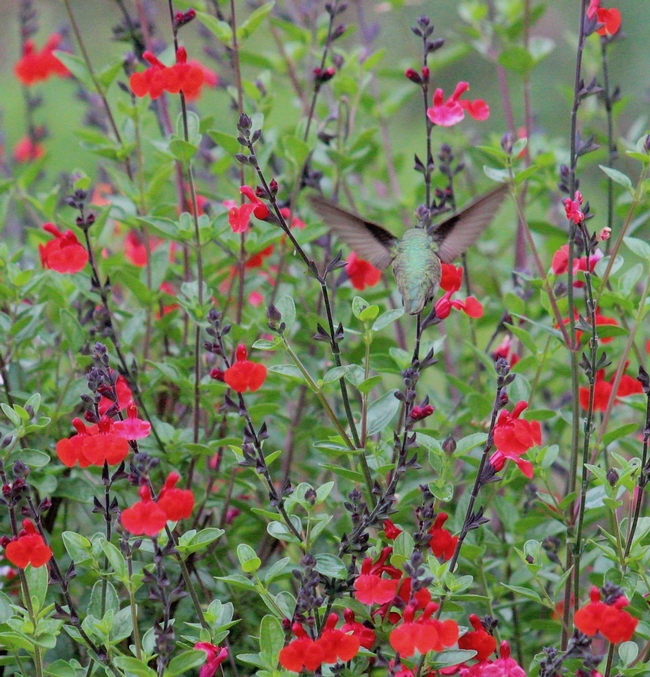
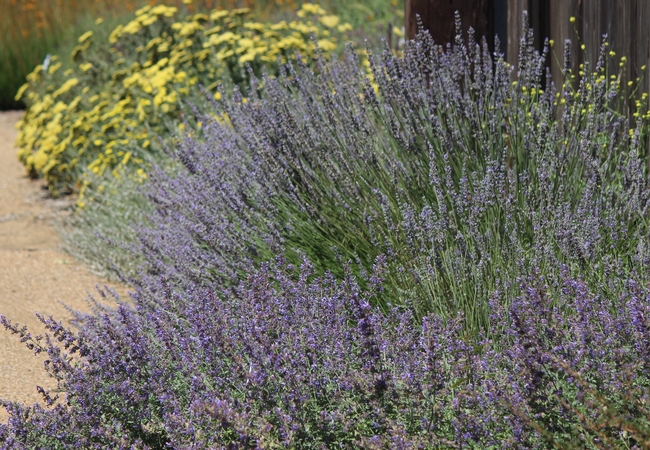
2. Analogous colors. Colors adjacent to each other on the color wheel are analogous; using these colors can be a bit trickier, especially with hot colors like oranges and reds. One way to combine these effectively is to mix in white, as is done here with white gaura in this planting of the analogous colors pink (echinacea) and purple (tall verbena).
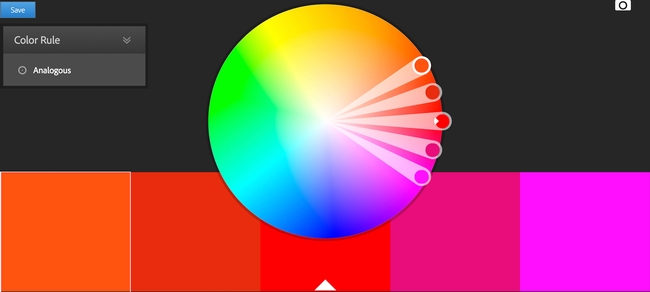
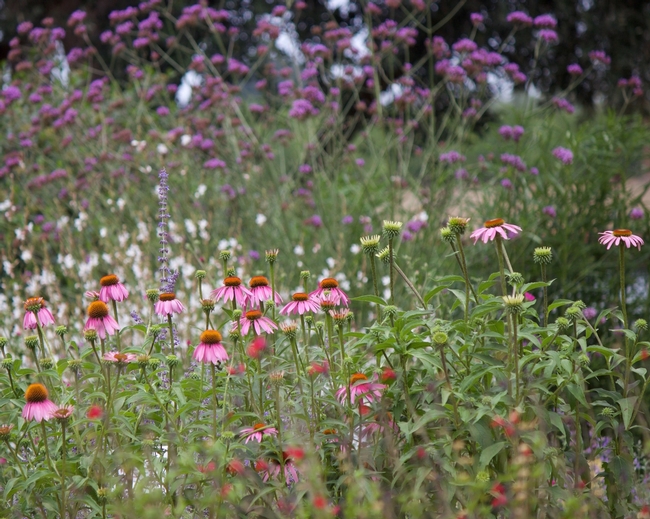
3. Shades of one color. This is the easiest combination to pull off. Cool colors (blues and purples) tend to create a calming effect and make the garden appear larger, while warm colors (reds and yellows) create energy and make the garden appear smaller. Here is an example of shades of a cool color (purple) used in the Haven:
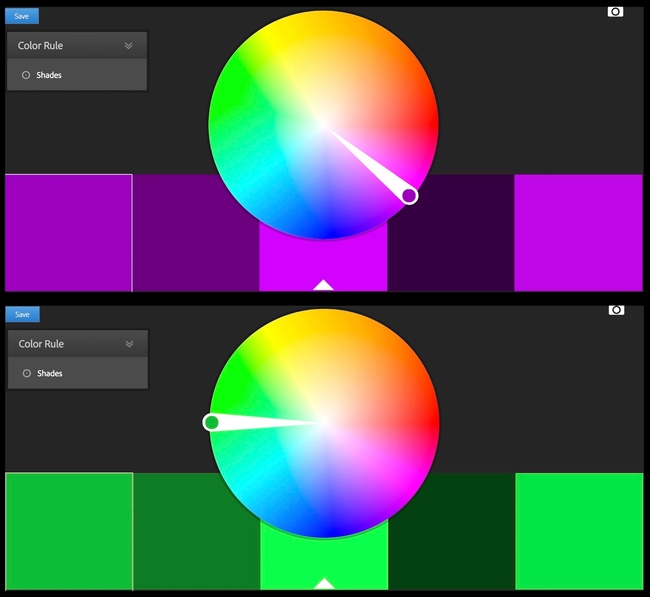
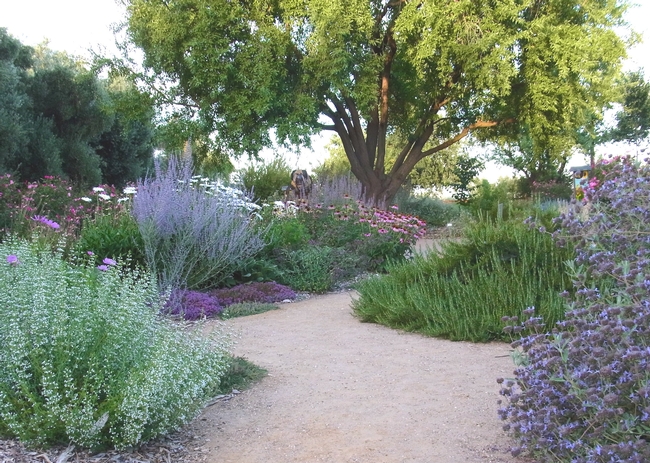
So how do we meld this with bee biology? Here are some pointers:
1. Bees see color differently than we do. They don't see red at all, and see purple very well....there's a reason we have so many purple flowers in the Haven. Here's an example: the first photo shows a flannel bush flower in daylight, while the second shows it under ultraviolet (UV) light, which is the light spectrum where bees see. The 'invisible' nectar (to us) is a bright blue beacon to bees under UV light.
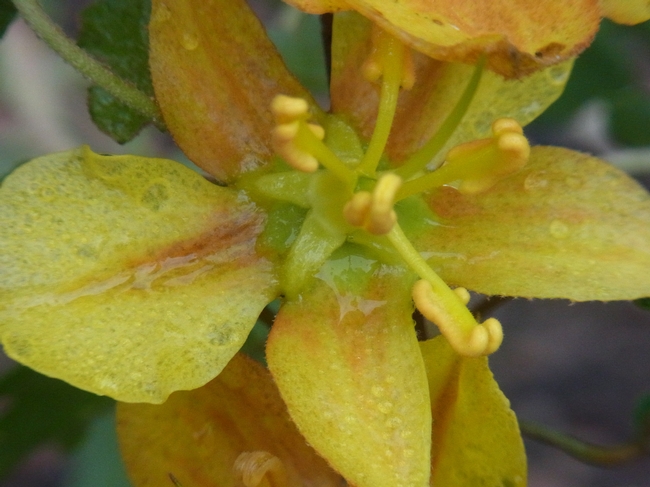
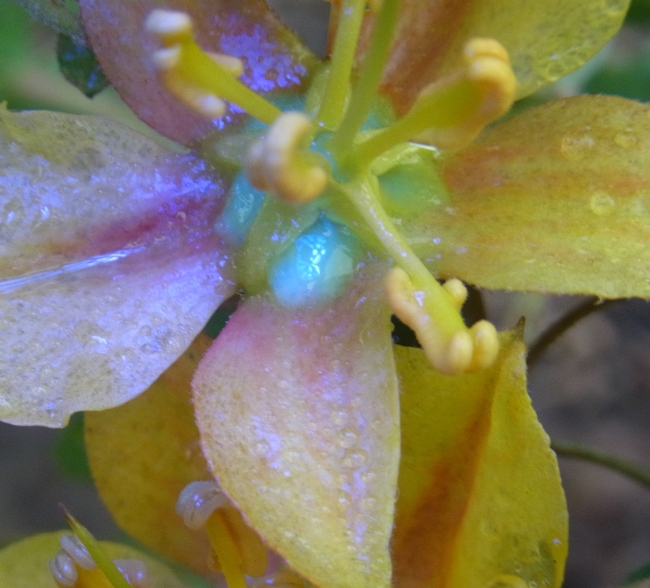
But, you might be thinking, I see bees on red flowers all the time! Well bees can use more than color to find a flower, which brings us to scent....I'll discuss this in a future post.
2. Does color pattern in the garden matter to bees? One study (Proc. R. Soc. London B. 2003. 270: 569-575) found that honey bee foraging distance was longer in simple landscapes; this makes sense because honey bees do best with a varied diet and need to travel further to find a mix of flowers in a simple landscape. Conversely, waggle dance activity was greater in complex landscapes because the patches of plants were more variable -- high quality and low quality plants were mixed together. So it's also important to ensure a good mix of high-quality bee plants in appropriately-sized patches.
3. Another aspect of flower color often not considered is patterns on the flowers themselves. Called nectar guides, these serve to guide bees into the nectary. Of course they pick up and deposit pollen as they do this, thereby pollinating the flower.
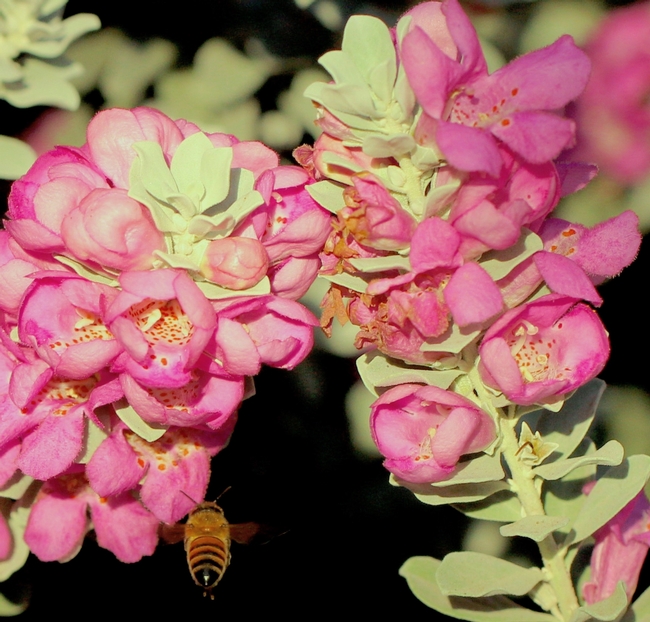
For lots more detail about how bees see, check out this article. My next post will cover shape, size, scent, and texture. I'll finish with suggested plant lists and planting plans. Here's to your successful bee garden!
- Author: Christine Casey
Like all animals, bees need food, water, and shelter. Most insects get all the water they need from their food: think of a caterpillar that feeds on plant leaves, which are mostly water. However, the pollen and nectar that constitute a bee's diet don't contain much moisture, so bees must have a water source. As the weather warms and foraging activity picks up, honey bees will start looking for water as well as pollen and nectar.
Honey bees are good learners, and once they find a water supply they will return regularly. Water is so important that foragers will do the waggle dance to direct hive mates to water sources just as they will for flowers. So to direct bees to the water you want them to use, it's important to provide attractive sources early in the year (i.e. now!) so they will learn these rather than the places you don't want them, such as a swimming pool.
So just what is a good water source? Here are some guidelines:
Accessible to bees
Bees can't swim! They must be able to stand where it's dry and drink. Good systems include shallow bird baths or pot bottoms filled with water and pebbles or corks. These allow the bees to stand and drink; they'll generally dry out too quickly for mosquitoes to be an issue. If your water source is a pond, Bacillus thuringiensis israelensis may be used for mosquito control as it's harmless to bees. At the Haven, we create 'pots' using coiled soaker hoses. Connected to a timer-controlled water supply, these are a great way to efficiently deliver water in bee-sized droplets. I provided construction details for this in a previous post.
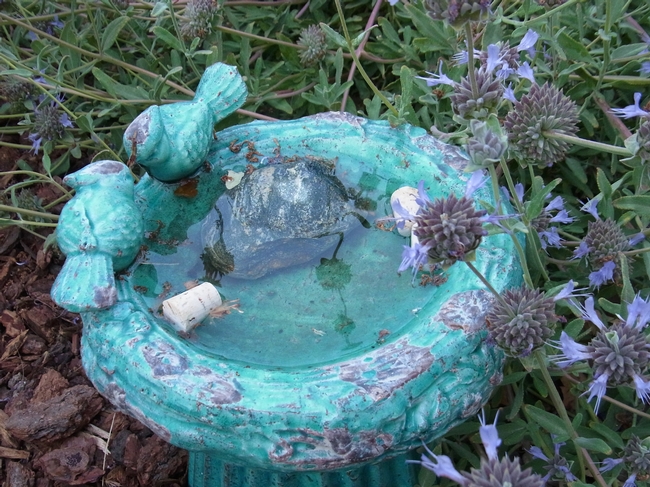

Nutritious for bees
Water needs to be nutritious? Surely bees need the same fresh, clean water that you or I might want? It turns out that water is an important route for bees to obtain essential nutrients. Butler (J. Experimental Biology, 1940, (17):253-261) coined the term 'dirty water' to refer to water containing nutrients. Probably because in the agricultural areas of Great Britain where he observed bees, they frequented areas we might consider undesirable. As he stated in his paper,
"It is well known that honeybees tend to collect water from many undesirable sources, such as rain-water gutters that are choked with decaying organic matter, on the puddles that form on the top of cow dung and sewage effluent, rather than from a source of clean water provided in the apiary for their use."
He performed chemical analysis of the water at these sites and found it to be high in various nutrients that were leaching from the organic material. Water with high sodium chloride (yes, table salt) seemed to be the source preferred by bees. A previous study (Hertz, Z. Vergl. Physiol., 1935, (21):463) suggested that bees used olfactory cues to located these preferred sources. To test this, Butler washed preferred water using activated charcoal and found that bees were unable to distinguish between the washed preferred water and distilled water. This confirmed Hertz' theory that odor cues are used to locate mineral-rich water. The take home from this? Don't place your water source near highly scented plants, and let leaves and algae sit in your bee water source.
More recent work by Bonoan et al. (Ecol. Entomol., 2017, (42):195-201) looked at drinking water as a source of micronutrients for bees. Honey bees were allowed to forage freely in a meadow and were provided water sources with varying chemical components. As with Butler, during much of the year they found that bees had a strong preference for sodium-rich water, regardless of plant diet. In the fall, however, when pollen is scarce, they showed a preference for water sources containing calcium, magnesium, and potassium, all of which are found in pollen. This demonstrated that honey bees have the ability to switch water sources to compensate for dietary nutrient deficiencies.
Plants as water sources
I mentioned earlier that the plant products consumed by bees -- pollen and nectar -- aren't good sources of water. Plants can be an indirect source, though. In a garden with overhead irrigation or large amounts of dew, water can sit for several hours on leaves that are covered with dense hairs. I've shown two examples from the Haven below. Since overhead watering can promote disease and waste water, try giving plants like these a quick wash from the hose so they'll do double duty as nectar and water sources.
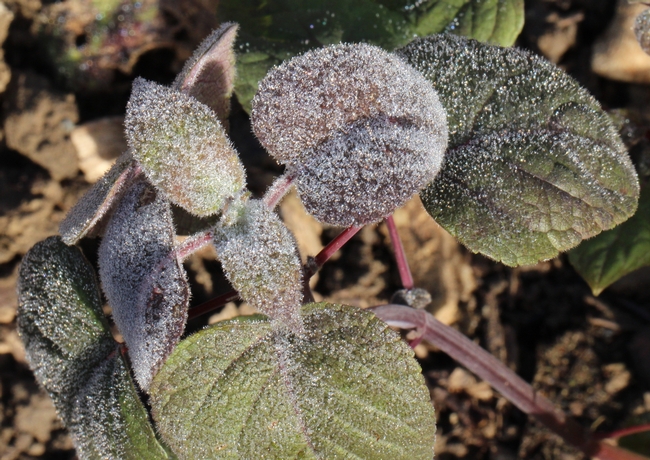
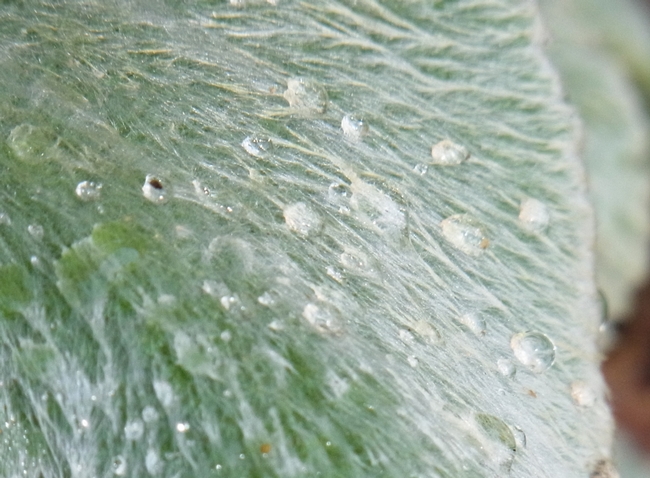
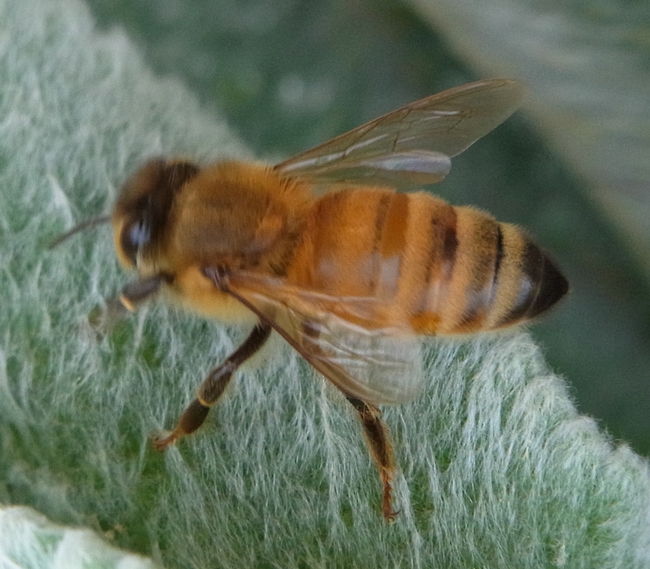
- Author: Christine Casey
This Saturday, August 19, 2017, is National Honey Bee Day. This commemoration was created by Pennsylvania beekeepers to recognize the beekeeping industry, honey bees, and the role they play in our food supply. Let's take this opportunity to honor the hard-working honey bees (they pollinate about 85% of bee-pollinated crops in the US, which is worth billions of dollars annually).
To keep honey bees healthy, access to ample, nutritious forage, i.e. flowers, is essential. It's important to provide year-round bloom and to include both pollen and nectar sources. The Haven's web page includes the information you need to develop this in your own garden; click here to go to all of our gardening resources.
Winter-blooming plants:
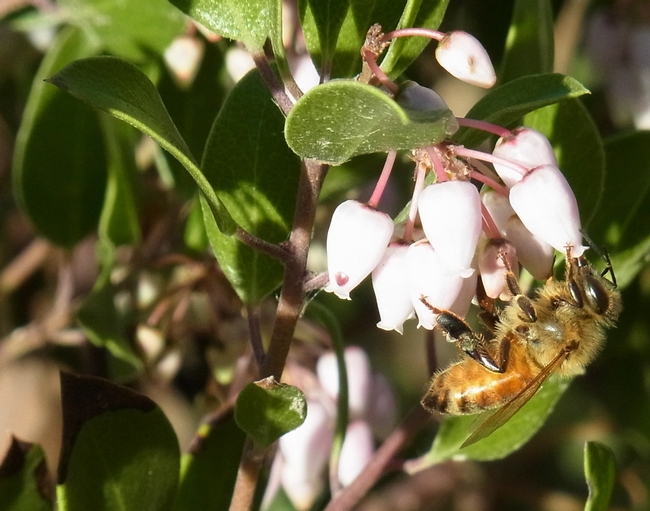

The winter food garden also depends on honey bee pollination:
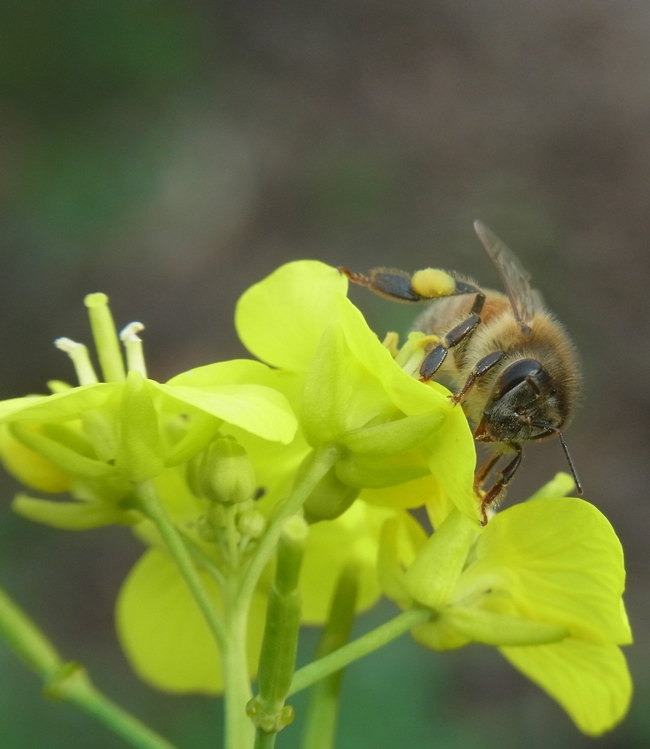
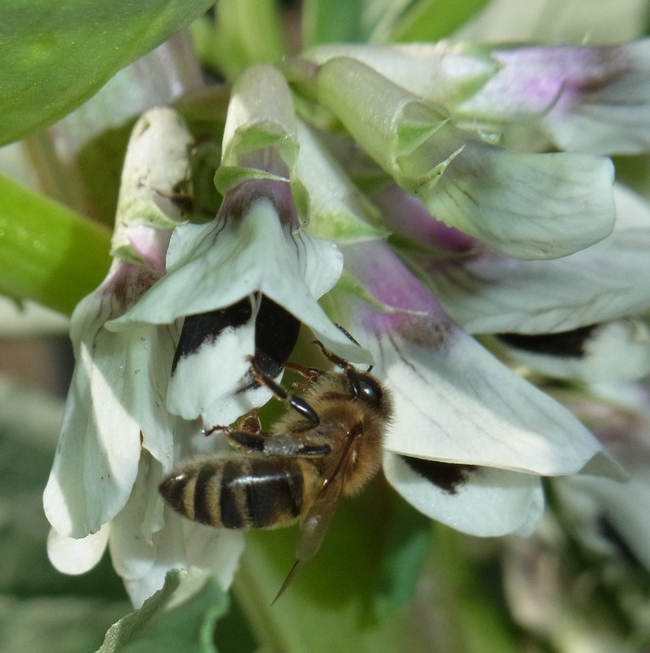
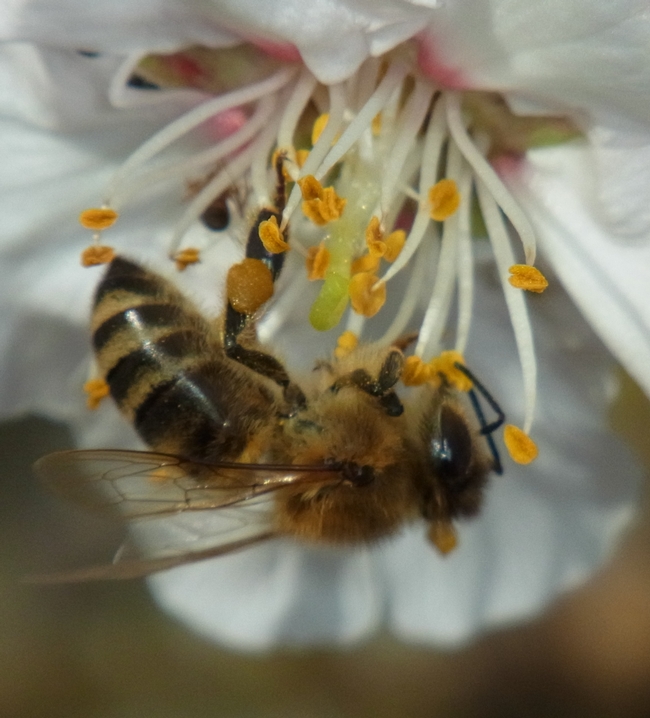
Early spring is when bees have a special need for pollen. This protein-rich plant component is fed to the young bees; an ample supply is important to building a strong colony. Early bloomers like ceanothus and California poppy are good pollen sources; March-blooming Spanish lavender provides a great nectar source that provides energy for spring foraging activity.
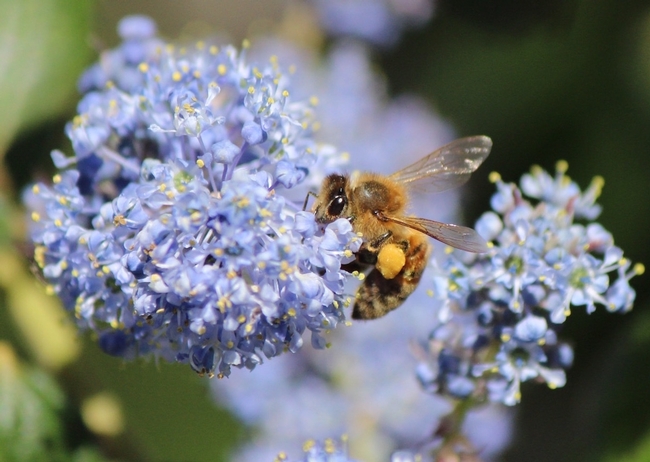
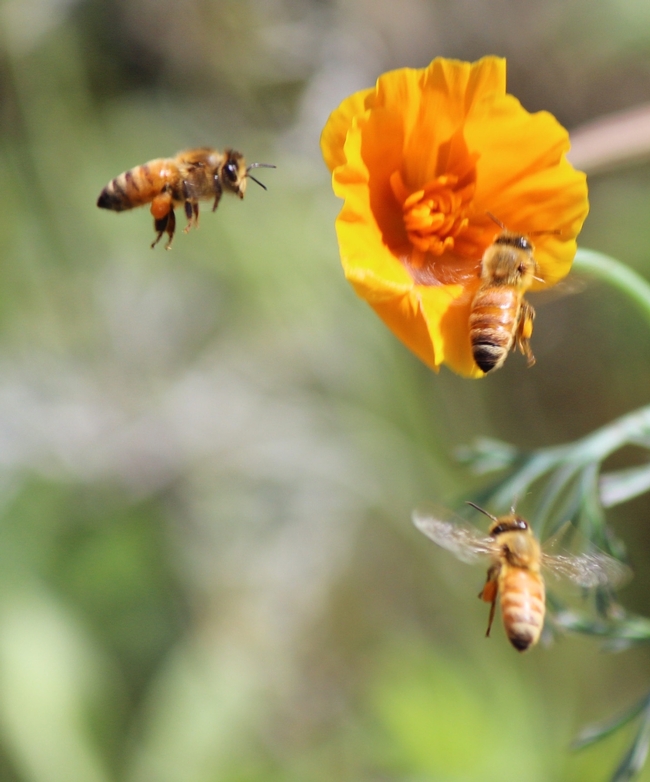
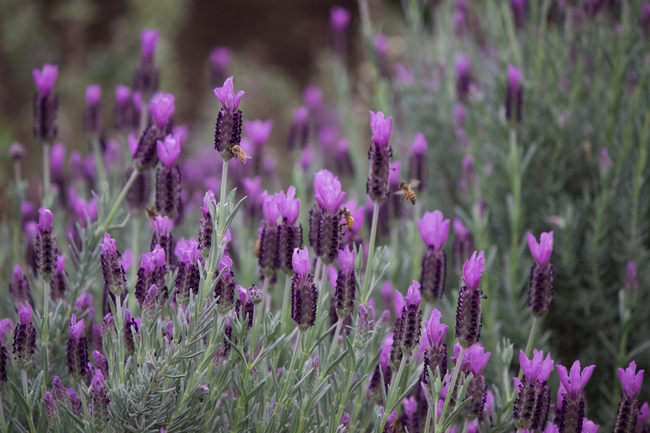
Late spring and into summer are when activity picks up in the bee garden. The hive is growing and there are bees to be fed! Here's a new bee entering the world, along with some of the pollen and nectar sources that will feed her:
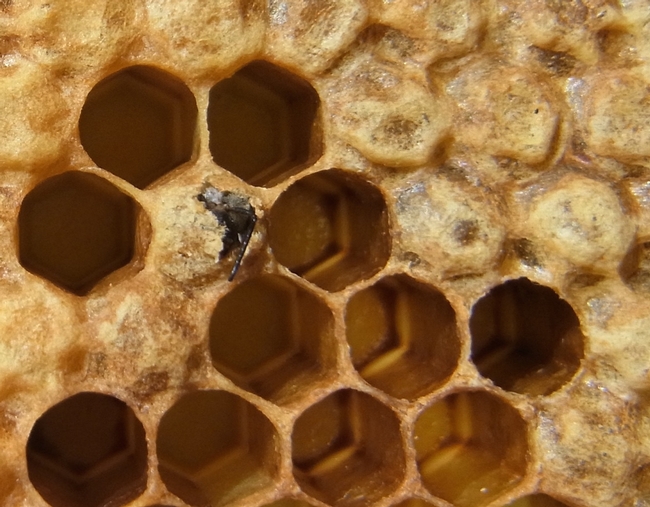
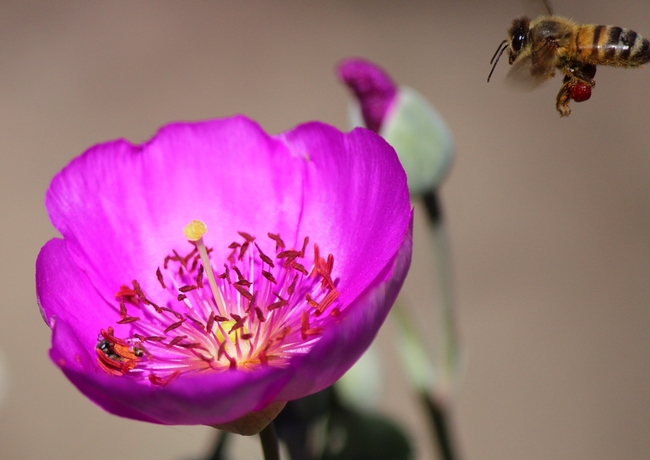
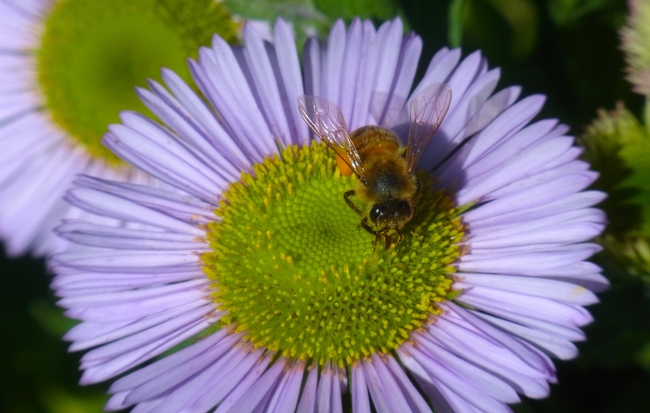
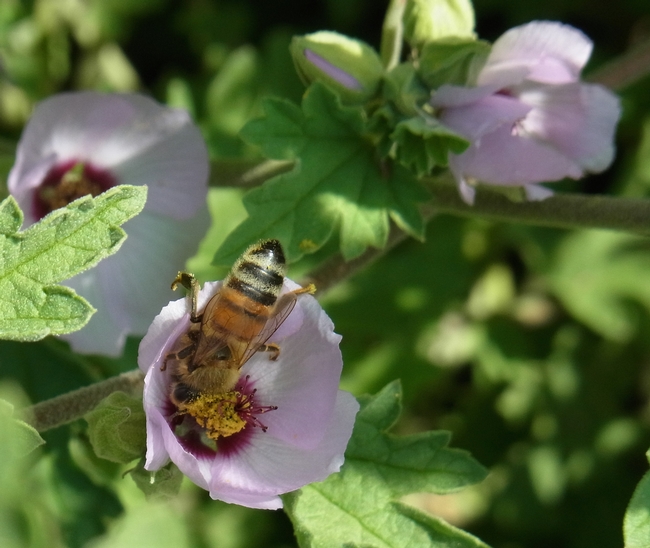
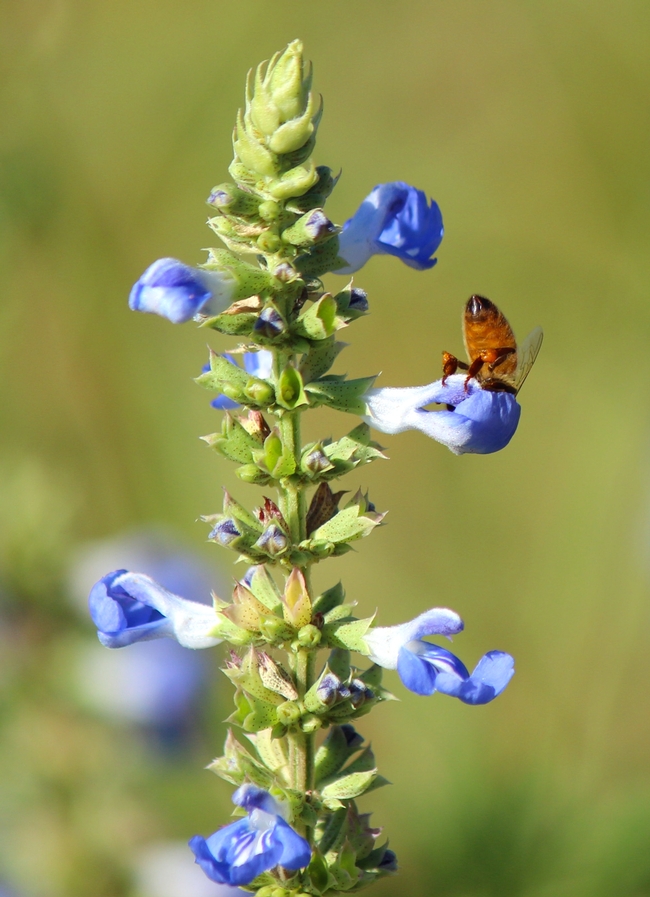
The heat of late summer often leaves gardeners heading for the air-conditioning, but not our bees...here's some plants that love the heat:
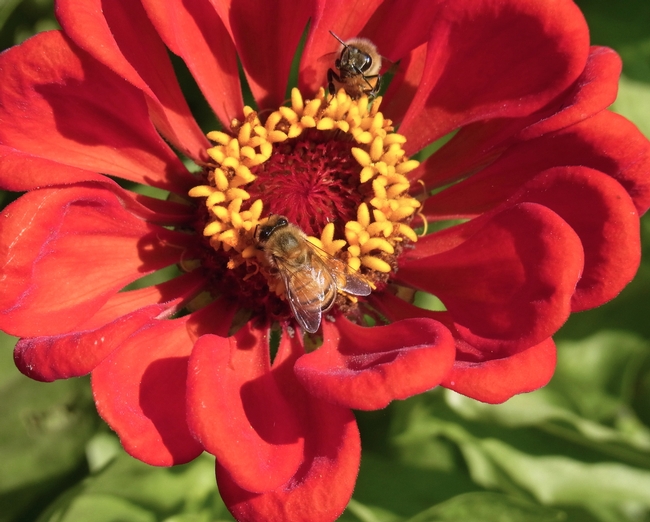
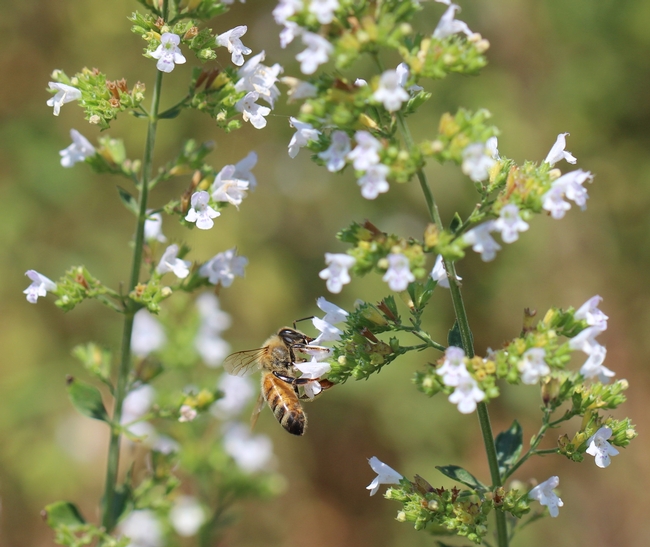
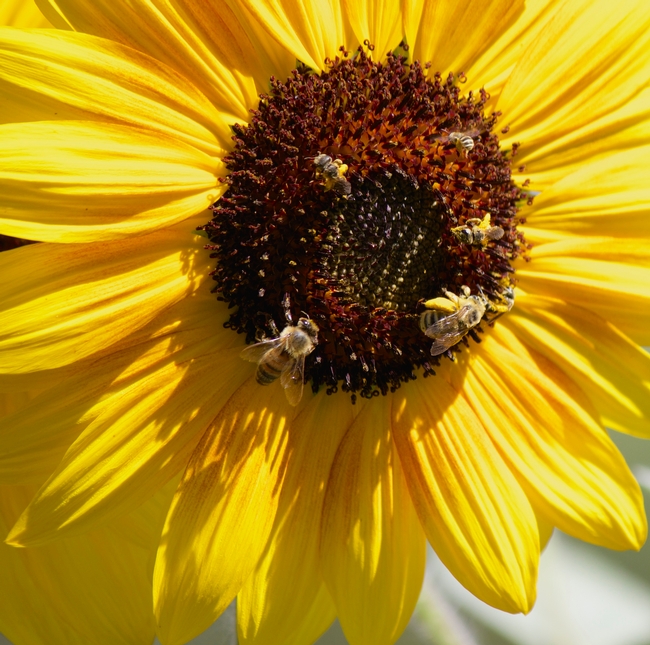
Honey bees need access to water: they don't have AC like we do, but use water to cool the hive. Here's one way to provide a water source:
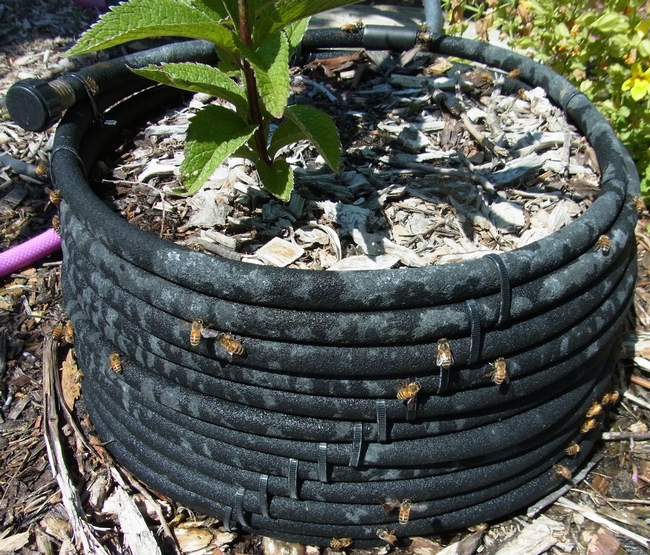
Fall bloomers are important to help honey bees put up enough honey to sustain the hive through the winter. Some good fall bloomers are shown here:
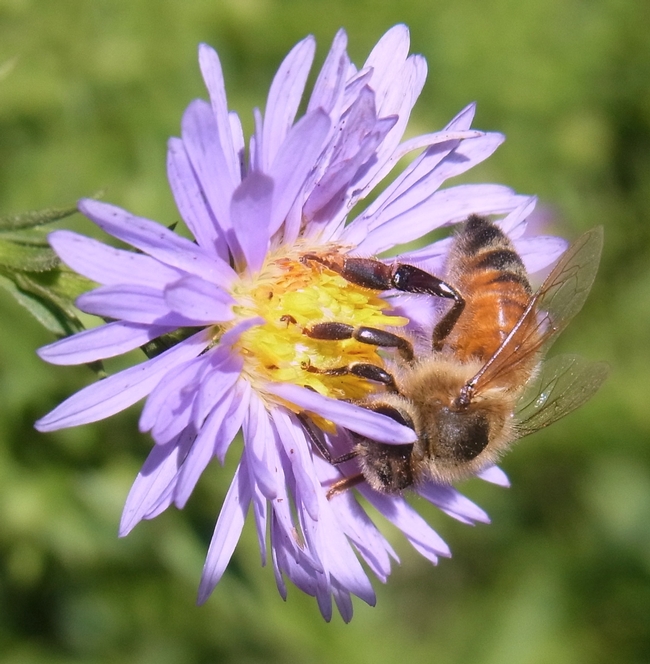
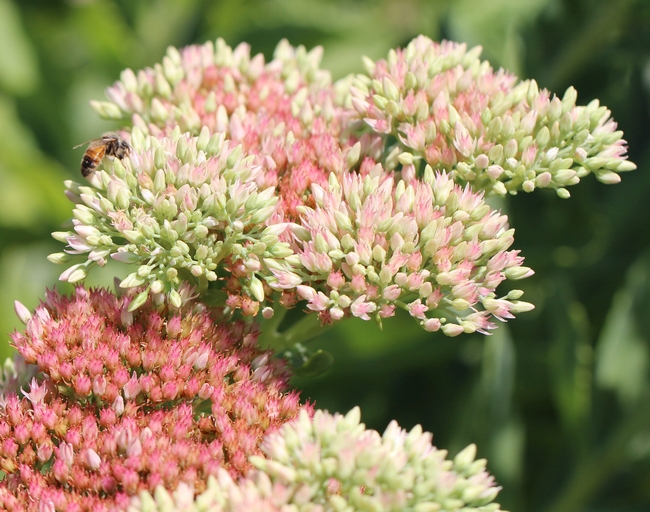

The result of all that hard work....cells being filled with honey, along with full frames of honey that have been capped by the bees for storage in the hive:
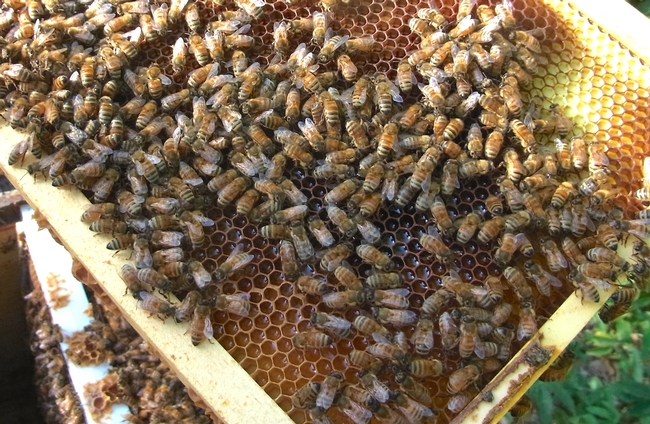
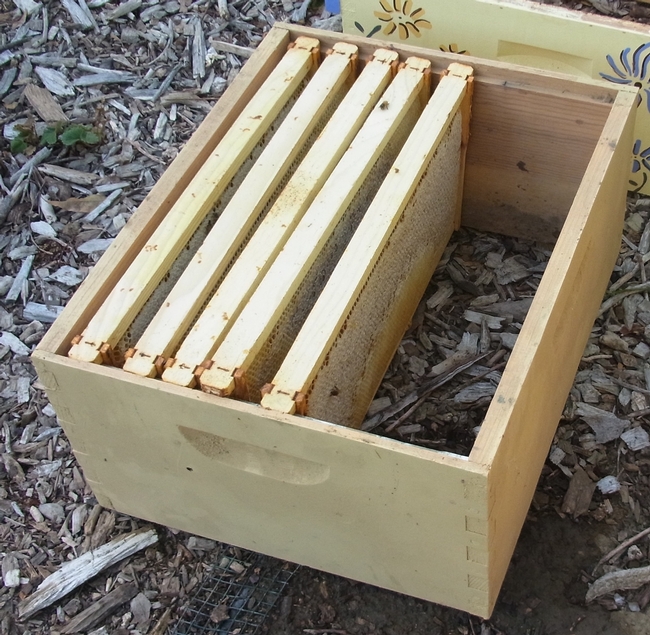
Thanks, bees, for your hard work!
- Author: Christine Casey
It wouldn't be spring without strawberries....or the bees that pollinate them!
California's strawberry crop was worth $1.8 billion in 2015; our state produces 88% of the US crop. Tasty and nutritious, they are high in vitamin C, potassium, iron, fiber, and antioxidants.
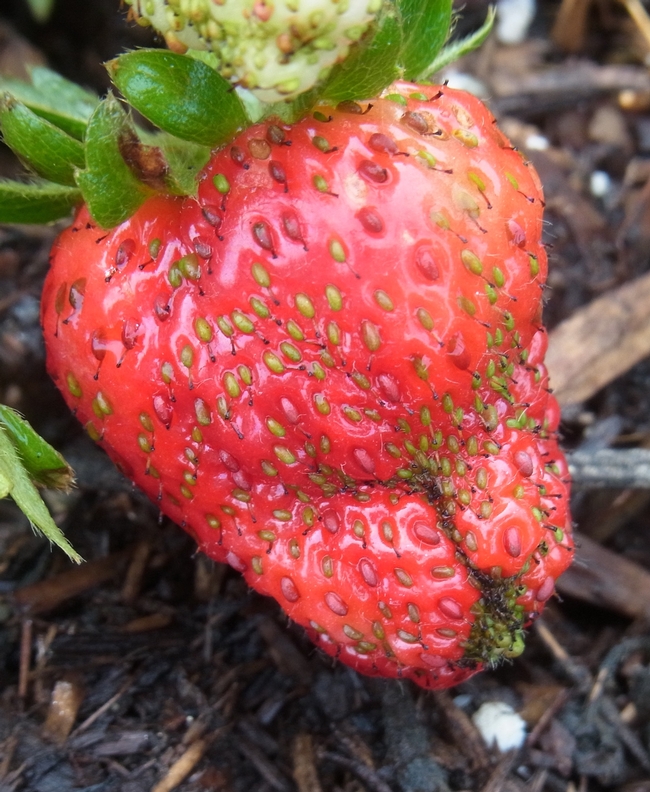
High-quality fruit takes teamwork: honey bees tend to pollinate the top of the flower, while wild bees pollinate the base. Bee pollinators of almonds include mason bees (Osmia spp.), honey bees (Apis mellifera), mining bees (Andrena spp.) and bumble bees (Bombus spp.).
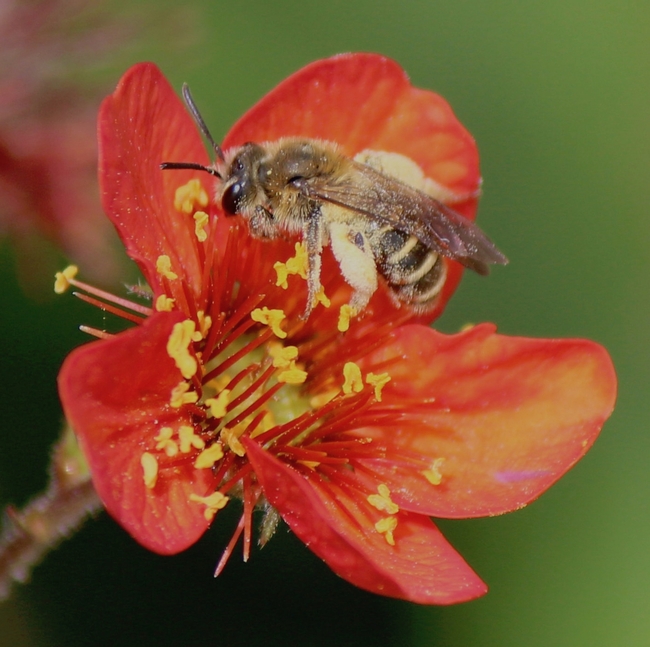
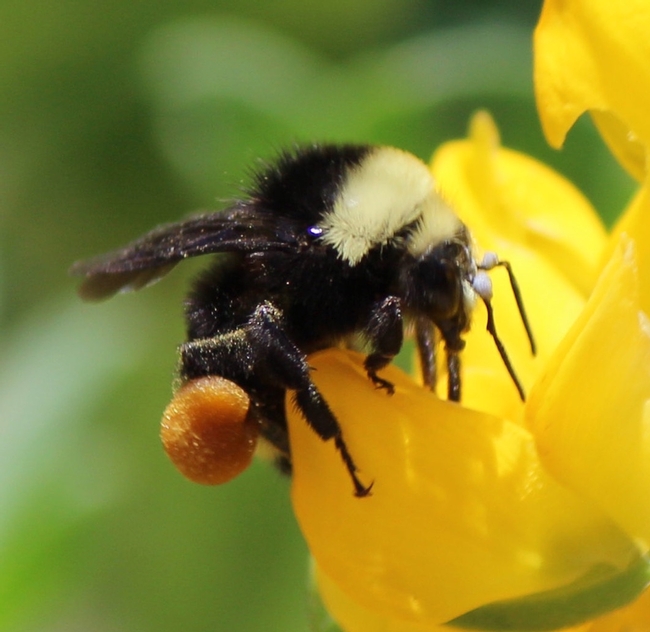
Strawberries are easy to grow at home.....want to improve pollination and yield in your home garden? In one study, planting wildflower strips next to strawberry field increased bee flower visits by 25%. An easy way to achieve this is to interplant strawberries with herbs and let the herbs flower.
- Author: Christine Casey
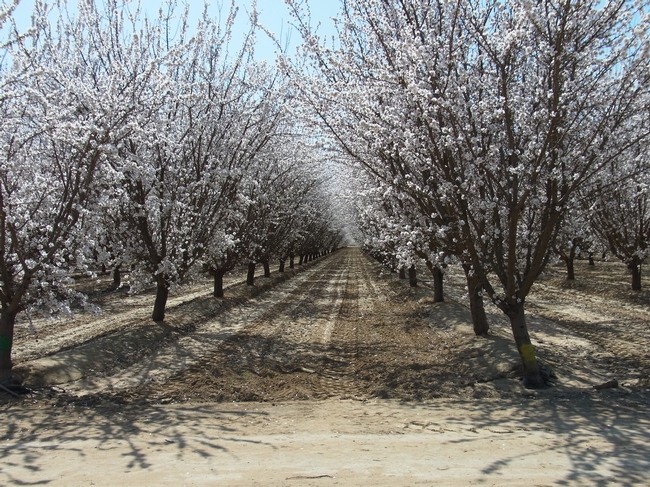
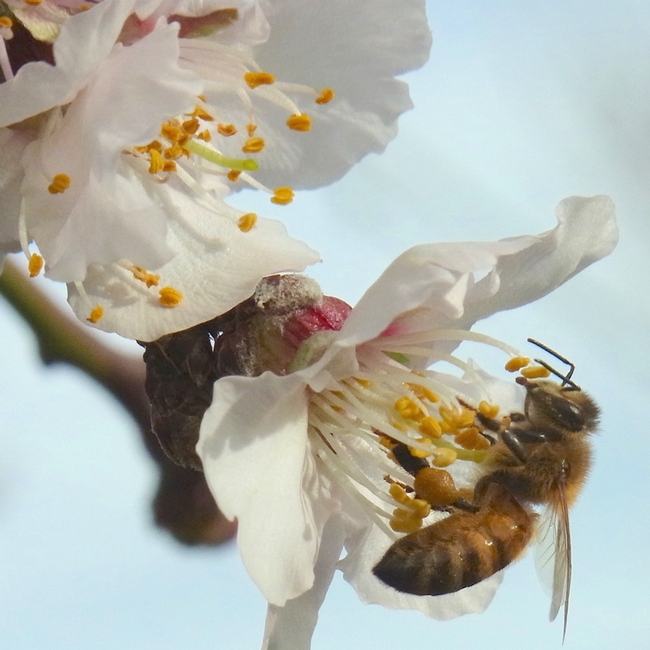
Bees obtain both pollen and nectar from almond flowers. Almond pollen is high in protein and provides healthy forage for bees. A solitary bee, Osmia lignaria, is active at the same time as almond bloom and is more likely than honey bees to fly in the cool, wet weather that can occur then. Although they are raised commercially for crop pollination, as solitary bees we currently have no way to produce them in the same quantity as honey bees. Osmia is a great option for home orchards; provide early-blooming plants and a solitary bee house to encourage them.
Honey bee hives are often left in orchards for a month or more before and after almond bloom. While many almond growers are recognizing the importance of providing alternative bee forage, if you live within flight distance of an orchard – 3 to 5 miles – your garden can also help.
California's almond crop was worth $6 billion in 2015; our state produces 82% of the world's supply of this specialty crop. Almonds are eaten whole, added to food, or made into products such as almond milk and almond butter. This nut is high in protein and monounsaturated fat and contains a number of vitamins and minerals. California's almond acreage continues to increase. Your garden can help ensure that there will be healthy bees for pollination of this important specialty crop.


